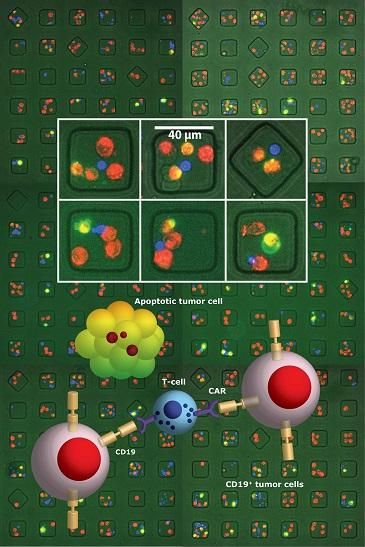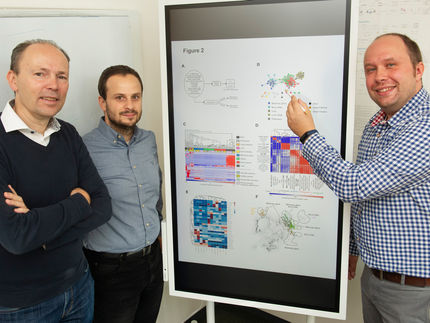Researchers develop advanced cell screening technology for cancer immunotherapy
University of Houston-led work could extend the breakthrough therapy to more cancer patients
Researchers have created a new method for screening cells used in immunotherapy cancer treatments, allowing high-performing immune system cells to be studied in isolation and potentially expanding the number of patients for whom the breakthrough treatment proves successful.

Researchers used Timelapse Imaging Microscopy In Nanowell Grids (TIMING) to demonstrate that CD4+ CD19-chimeric antigen receptor (CAR+) T cells participate in multi-killing of tumor cells with slower kinetics of killing than CD8+CAR+T cells but high motility subgroups of both T-cell subsets have similar kinetics.
University of Houston
Engineers from the University of Houston, working with physicians from the University of Texas M.D. Anderson Cancer Center, describe the method - Time-lapse Imaging Microscopy in Nanowell Grids, or TIMING - and its ability to more accurately analyze large numbers of cells for use in the cancer therapy. They also demonstrated its potential in research evaluating how effective various types of T cells are in killing cancer cells.
Badri Roysam, chairman of the UH Department of Electrical and Computer Engineering and Navin Varadarajan, assistant professor of chemical and biomolecular engineering at UH, collaborated with M.D. Anderson's Laurence J.N. Cooper on the research, along with a number of other UH researchers.
Clinical studies have reported life-saving results from cancer immunotherapy, but they don't work for everyone, not even everyone with one of the cancers for which the treatments have proven most successful.
TIMING could change that by allowing researchers to study many more interactions between immune cells and cancer cells, thanks to its ability to automatically analyze thousands of cell interactions at a time. Conventional analysis is done manually, the researchers said, making it impossible to study every combination.
TIMING works like this: A nanowell grid allows discrete samples of immune cells and cancer cells to be confined and studied over time, via time-lapse video recording.
"We've developed a game-changing piece of software that can accurately analyze an entire grid of nanowell videos and make quantitative measurements," Roysam said.
Varadarajan said the system allows "high-performing outliers" to be identified for further research. Several types of immune cells were used, including T cells, CAR cells - T cells modified with chimeric antigen receptors, which allow them to hone in on and kill cancer cells - and what are known as NK or "natural killer" cells, which can detect tumors without modification. Researchers used both leukemia cells and melanoma cells in their testing.
Most read news
Organizations
Other news from the department science

Get the analytics and lab tech industry in your inbox
By submitting this form you agree that LUMITOS AG will send you the newsletter(s) selected above by email. Your data will not be passed on to third parties. Your data will be stored and processed in accordance with our data protection regulations. LUMITOS may contact you by email for the purpose of advertising or market and opinion surveys. You can revoke your consent at any time without giving reasons to LUMITOS AG, Ernst-Augustin-Str. 2, 12489 Berlin, Germany or by e-mail at revoke@lumitos.com with effect for the future. In addition, each email contains a link to unsubscribe from the corresponding newsletter.
























































